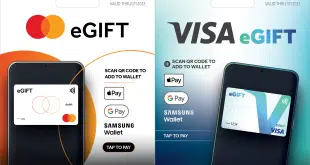Proposals to extend a transaction-messaging protocol based on extensible markup language (XML) to the retail point of sale are meeting some skepticism among current and former POS terminal executives. The protocol, known as interactive financial exchange (IFX), relies on the flexibility of XML, an Internet language, to simplify messaging across vendor platforms and to ease the addition of Web-based consumer services at terminals. The IFX Forum, a Falls Church, Va.-based trade group, has developed a specification for the protocol to be used in ATM networking, and now proposes to do likewise for point-of-sale transactions (Digital Transactions News, July 15). But some POS experts are less than convinced that processors and terminal makers will be adopting IFX any time soon. “It's going to be a while before you see IFX as a requirement for POS,” says Stuart Taylor, worldwide vice president of marketing for I-S-Cubed Inc. and until recently a marketing executive for VeriFone Inc., Santa Clara, Calif., a major terminal maker. Taylor says IFX is most suited to add-on messaging, such as loyalty data linked to specific card users' transactions and other promotions. For basic credit and debit card payments, he argues, current messaging standards work just fine. Even merchants looking to swap out older devices for new ones, he says, are likely to opt for the lowest-cost terminals that meet their basic needs. “There's no free lunch here,” he says. “Yes, people will get more capable devices but it's still a competitive world. They will still buy the basic terminal they need for credit, debit, and [electronic benefits transfer]. These are not going to be high-end streaming-video terminals.” Some executives fear the added message size of IFX may be too much for POS networks, which still operate primarily in a dial-up mode. “We're not sure about it,” says Eric Duprat, senior vice president of global marketing and product development at Phoenix-based Hypercom Corp., a VeriFone competitor. “We're looking into it but we're concerned with the size of the message.” Currently, payment messages run 128 bytes. The EMV transaction standard developed for chip cards, which is rolling out in Europe and starting to come to North America, Duprat says, doubles that to 256 before any consideration of IFX. This will become less of an issue, he says, as terminals move to Internet Protocol (IP) connections, but this is a gradual migration. ATMs, by contrast, often operate on leased lines or are already linked to IP networks, so message size is less important. “For ATMs, [IFX] makes a lot of sense,” Duprat says. Moreover, IFX isn't the only protocol that incorporates the benefits of XML. “There are other ways to leverage XML,” notes Duprat. Indeed, the debate over XML-based standards is going on mostly among engineers, without much notice from top transaction executives right now. “It's in the religious war stage,” says I-S-Cubed's Taylor.
Check Also
How Congress Stymied Mobile App Bills Based on a CFPB Rule
Sweeping regulation that would have impacted all major mobile-payment apps in the United States appears …





